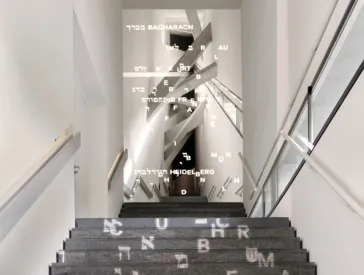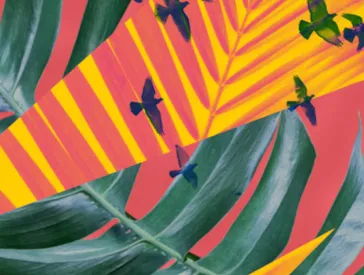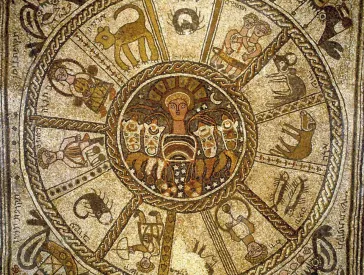A House on the Road
The “Baisinger Tabernacle”
Our exhibition A Time for Everything: Rituals Against Forgetting met with great success at its previous venue in Munich. We therefore invited Bernhard Purin, director of the Jewish Museum Munich, to write a piece for our website. He introduces us to an exhibit that is of relevance to Sukkot.
The Feast of Booths (“Sukkot” in Hebrew, from the word “sukkah,” meaning “tabernacle”) will be celebrated this year from 19–25 September 2013. Along with Passover and Shavuot, it numbers among the three pilgrimage festivals, and commemorates the forty years Israelites spent wandering in the desert after the exodus from Egypt. The Third Book of Moses (23: 42–43) ordains:
“Ye shall dwell in booths seven days; all that are home-born in Israel shall dwell in booths; that your generations may know that I made the children of Israel to dwell in booths, when I brought them out of the land of Egypt: I am the LORD your God.”
Booths have been built ever since and their roofs covered with foliage, in keeping with this commandment. Rural Jews in Germany often erected such booths in the attic of their homes, and this tradition has been taken up at the Jewish Museum Franken in Fürth as well as at its Schwabach branch. Yet mobile booths which could be set up in the garden before the festival, then taken apart and packed away for the rest of the year, were also common. One booth of this kind survived in the village of Baisingen near Rottenburg am Neckar, where a large Jewish community once lived.

Family in the sukkah, presumably Germany, ca. 1900–1913, chromolithograph on cardboard, embossed, punched, 8.2 × 9.8 cm; Jewish Museum Berlin, accession 1999/211/12, photo: Jens Ziehe. Further information on this object can be found in our online collection (in German)
 X
X
Family in the sukkah, presumably Germany, ca. 1900–1913, chromolithograph on cardboard, embossed, punched, 8.2 × 9.8 cm; Jewish Museum Berlin, accession 1999/211/12, photo: Jens Ziehe. Further information on this object can be found in our online collection (in German)
The “Baisinger Tabernacle” was used from the 1920s onwards by the Giedeon family, who were butchers by trade. After the last Jews had been deported from Baisingen, their property was put up for sale by public auction. A non-Jewish Baisinger acquired the tabernacle. It was used first as a hencoop then as a tool shed. In the 1980s, students conducting a project on National Socialism at Tübingen’s Ludwig Uhland Institute became aware of the tabernacle and mentioned it both in an exhibition catalog and an M.A. thesis. Yet its value as a cultural monument was not fully recognized at the time.
The tabernacle again sank into near oblivion and served as a tool shed. In the year 2000, when an Israeli colleague and I undertook a research trip to several rural synagogues in southern Germany, we viewed the one in Baisingen too, which had been converted into a memorial site; then, while taking a stroll around the village, we came across the tabernacle. A few days later I brought this relic to the attention of Prof. Hubert Krins, then director of the Tübingen Heritage Board’s branch office. He committed himself wholeheartedly to saving the tabernacle, which was ultimately acquired by the City of Rottenburg, restored with Heritage Board funding, then listed in Baden-Wuerttemberg’s register of movable cultural monuments. It has since been put on display several times in Baisingen’s former synagogue. And now, for the very first time, the “Baisinger Tabernacle” is on the road and can be seen at the Jewish Museum Berlin, in the exhibition A Time for Everything.
Bernhard Purin, Director of the Jewish Museum Munich
Citation recommendation:
Bernhard Purin (2013), A House on the Road. The “Baisinger Tabernacle”.
URL: www.jmberlin.de/en/node/10659


